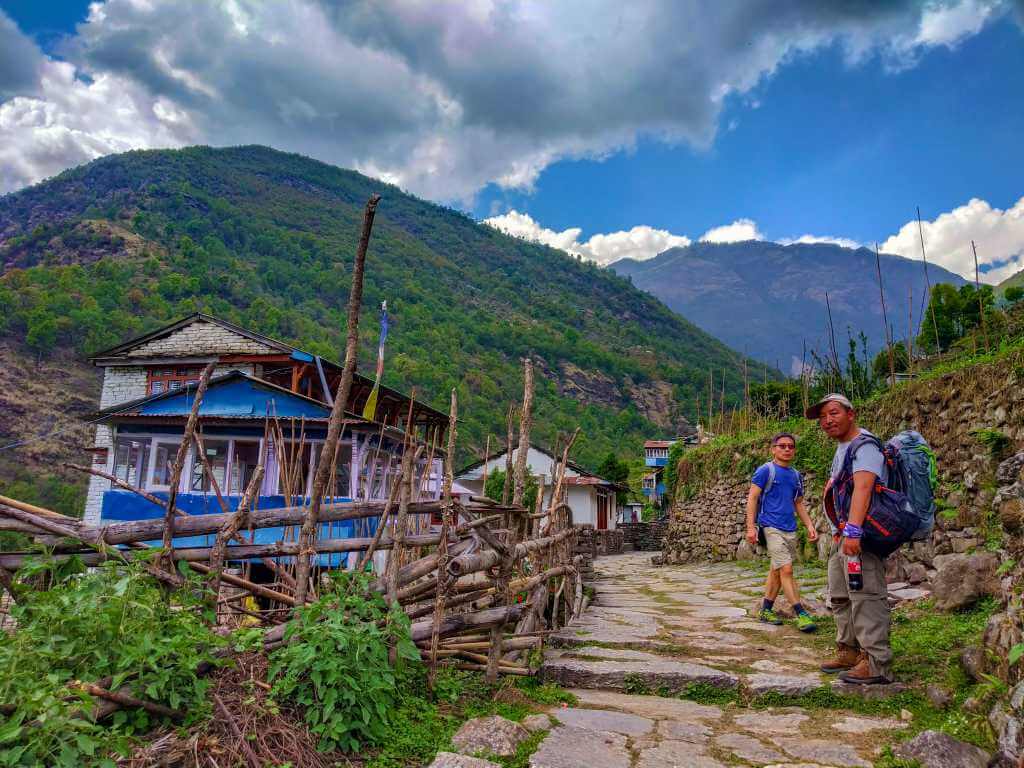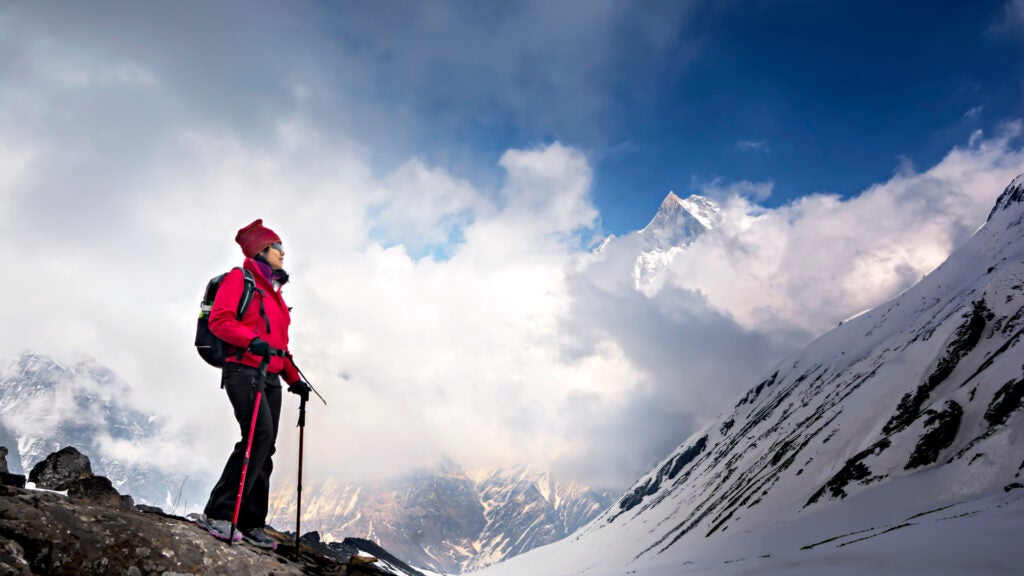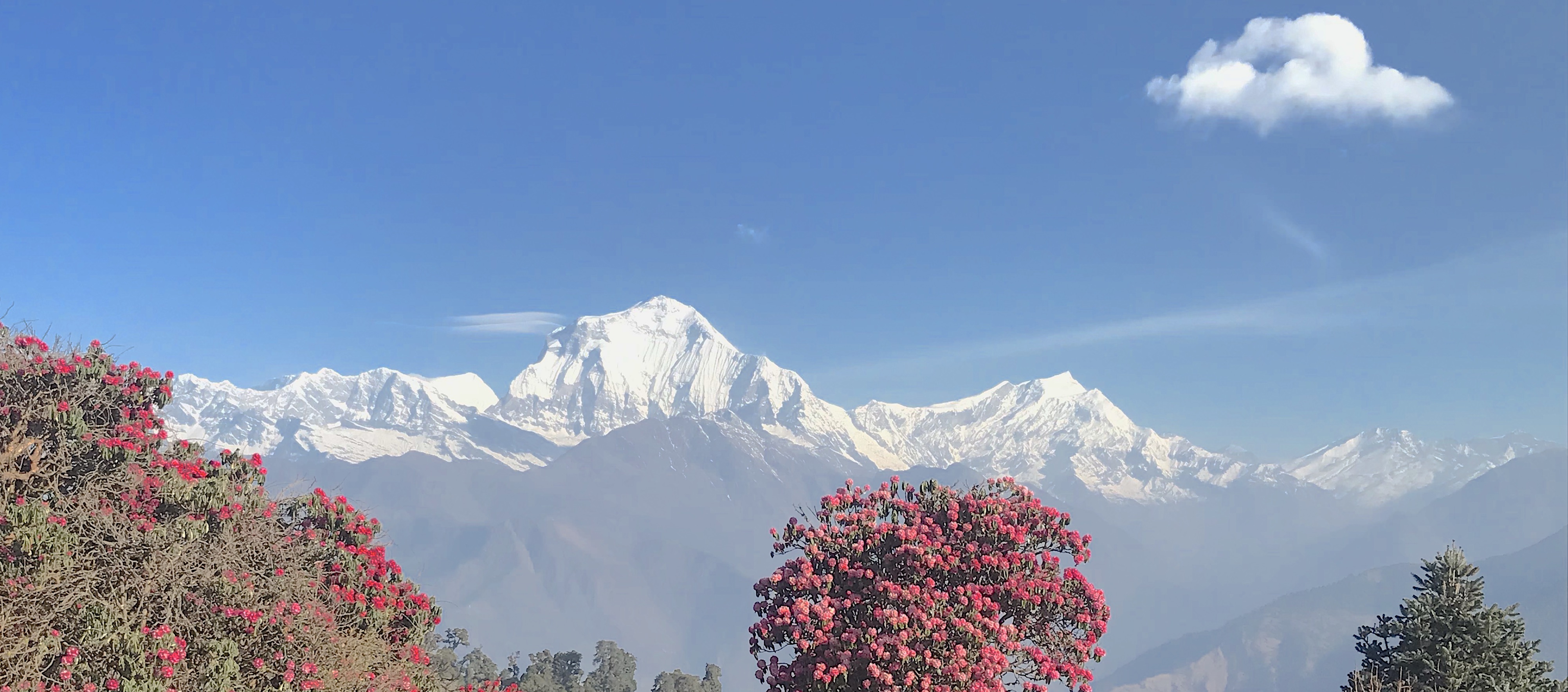Trekking in Paradise: Why Nepal Reigns Supreme for Adventure and Nature Seekers

Introduction
Overview of Nepal as an Adventure Destination
Nestled between the towering Himalayas and lush lowland Terai, Nepal is undeniably one of the world's premier adventure destinations. This enchanting country invites thrill-seekers from every corner of the globe, offering a tapestry of experiences that range from serene mountain treks to exhilarating white-water rafting. The rich blend of culture, geography, and biodiversity makes it a tourist hotspot for outdoor enthusiasts.
Key attractions include:
- Diverse terrains: Ranging from the world’s highest peaks to verdant jungles
- Rich culture: A kaleidoscope of traditions influenced by Buddhism and Hinduism
- Warm hospitality: Local communities eager to share their stories and way of life
Brief History of Trekking in Nepal
The allure of trekking in Nepal began in the early 20th century when explorers and climbers started to venture into the magical landscapes.
- 1940s: The first expeditions to major peaks sparked global interest.
- 1960s-1970s: The trekking boom began, attracting adventurers looking for both challenge and beauty.
- Present day: Nepal is now a trekking paradise, hosting thousands of trekkers annually.
Today, trekking routes are well-mapped and cater to varying levels of experience, ensuring that each adventurer can discover the majesty of Nepal while also connecting with its vibrant culture and stunning landscapes. Whether you’re a seasoned mountaineer or a casual trekker, there's a path waiting for you in this breathtaking country.

Geography and Landscape of Nepal
Diversity of Terrain in Nepal
Transitioning from the rich opportunities for adventure, the geography of Nepal is a treasure trove of diverse terrains that beckon explorers and nature lovers alike. From the soaring peaks of the Himalayas to the rolling hills and tantalising plains, this country offers something unique at every elevation.
- The Himalayas: Home to eight of the world's fourteen highest peaks, including Everest, the majestic mountains define much of Nepal's landscape.
- Hills and Valleys: The mid-hills are dotted with picturesque villages, terraced fields, and ancient temples, providing a serene contrast to the rugged mountains.
- Terai Region: This lowland area is characterized by forests, rivers, and fertile plains, rich in biodiversity and vibrant communities.
These varied landscapes create an incredible backdrop for trekking routes that appeal to both novice hikers and seasoned adventurers.
Impact of the Himalayas on Nepal's Landscape
The Himalayas wield a profound influence over Nepal's geography, weather patterns, and culture.
- Climate Regulation: The mountains create a barrier for monsoon winds, shaping distinct climatic zones across the country.
- Cultural Identity: The presence of the Himalayas has inspired countless cultural traditions and spiritual beliefs, heavily influencing local communities.
- Biodiversity: The altitudinal range of the Himalayas fosters diverse ecosystems, enabling a mosaic of flora and fauna to thrive.
As you traverse through Nepal, the grandeur of the Himalayas is hard to miss, and their potential impact on your trekking experience cannot be overstated. Embrace this awe-inspiring backdrop as it shapes not just the land but also the distinctive character of this extraordinary nation.

Popular Treks in Nepal
Having explored the diverse landscapes of Nepal, it’s time to delve into some of the most popular trekking routes that draw adventurers from all over the globe. Each trek offers its unique charm and challenges while promising unforgettable experiences amidst stunning backdrops.
Annapurna Circuit Trek
The Annapurna Circuit is often hailed as one of the best trekking routes in the world. Spanning about 160-230 km, it takes trekkers through a rich tapestry of terraced fields, ancient villages, and alpine meadows, finishing at the magnificent Thorong La Pass at 5,416 meters. It's not uncommon for trekkers to enjoy:
- Cultural Discovery: Engage with locals in vibrant Gurung and Thakali villages.
- Diverse Ecosystems: Experience the shift in flora and fauna as you ascend through varying climatic conditions.
Everest Base Camp Trek
No trip to Nepal would be complete without mentioning the Everest Base Camp trek. Marvel at the breathtaking views of the world’s tallest peak while traversing through Khumbu glaciers and traditional Sherpa settlements. This trek generally features:
- Stunning Panoramas: Awe-inspiring views of towering peaks like Ama Dablam and Lhotse.
- Rich Cultural Insights: Discover Sherpa culture in villages such as Namche Bazaar and Tengboche, with its iconic monastery.
Langtang Valley Trek
For those seeking a slightly less crowded trek, the Langtang Valley offers a serene experience amidst lush forests and high mountains. This trek has its highlights, including:
- Unique Flora and Fauna: Discover rhododendron forests and the chance to spot rare species like the red panda.
- Cultural Encounters: Interact with the local Tamang people and learn about their unique traditions and lifestyles.
Whether you choose the Annapurna Circuit, the iconic Everest Base Camp, or the tranquil Langtang Valley trek, each route showcases the enchanting beauty of Nepal. Prepare for a journey filled with breathtaking landscapes, rich cultures, and unforgettable moments.
Flora and Fauna of Nepal
As our journey through Nepal’s breathtaking pathways continues, we’re reminded that the country’s charm extends far beyond its landscapes. The rich flora and fauna are equally captivating, making it a haven for nature enthusiasts and wildlife lovers.
Biodiversity in Nepal
Nepal holds a remarkable position in the world of biodiversity, thanks to its wide range of ecosystems—ranging from tropical forests in the Terai region to alpine meadows in the Himalayas.
- Variety of Plant Life: Over 6,500 species of flowering plants, including the magnificent rhododendron (Nepal's national flower), thrive here.
- Wildlife Diversity: From the one-horned rhinoceros to elusive snow leopards, an abundance of wildlife calls Nepal home.
This rich biodiversity not only enhances trekking experiences but also supports local economies through ecotourism.
Endangered Species Found in Nepal
Sadly, many of Nepal’s unique species face threats due to habitat loss and poaching. Conservation efforts are crucial to protect these remarkable animals:
- Bengal Tiger: Found in the Terai lowlands, these majestic cats are a key attraction in Chitwan National Park.
- One-Horned Rhinoceros: With successful conservation programs, their population is slowly increasing, particularly in Chitwan and Bardia National Parks.
- Snow Leopard: This elusive feline, adapted for life in the mountains, is threatened by climate change and habitat fragmentation.
Visitors often have the chance to witness these magnificent creatures in their natural habitats, serving as a profound reminder of the need for ongoing conservation efforts. By trekking through Nepal, you not only embrace the stunning landscapes but also contribute to the preservation of its unparalleled biodiversity.
Cultural Experience in Nepal
As you traverse the stunning landscapes of Nepal, don’t miss the opportunity to immerse yourself in its rich cultural tapestry. The influence of Buddhism and Hinduism is woven into the very fabric of Nepali life, shaping traditions, festivals, and daily practices.
Influence of Buddhism and Hinduism on Nepali Culture
Nepal is often referred to as the birthplace of the Buddha, and this spiritual legacy is palpable throughout the country. The coexistence of Buddhism and Hinduism enriches the cultural experience for visitors.
- Religious Sites: Iconic landmarks such as Swayambhunath (the Monkey Temple) and Pashupatinath Temple stand testament to the revered traditions of both faiths.
- Festivals: Events like Dashain and Tihar bring communities together through vibrant celebrations that include rituals, music, and dance.
As you trek, you'll find that spirituality and reverence for nature are embedded in the local customs.
Traditional Practices Along Trekking Routes
Along the popular trekking routes, you can observe unique traditional practices that have stood the test of time.
- Homestays: Engage with local families who offer authentic experiences, from sharing stories over a meal to helping with daily chores.
- Local Cuisine: Enjoy traditional dishes like dal bhat, a wholesome lentil soup served with rice, which energises trekkers and embodies the warmth of Nepali hospitality.
- Craftsmanship: Discover local arts such as Thangka painting or traditional wood carving, showcasing the skills passed down through generations.
These cultural interactions not only provide insight into daily life but also create lasting memories. Embracing these experiences will deepen your connection with Nepal and its people, making your journey all the more meaningful.

Safety Tips for Trekking in Nepal
As exhilarating as your trekking adventure in Nepal can be, it’s essential to prioritise safety. Understanding the risks associated with high-altitude trekking can help ensure a smooth journey, allowing you to fully enjoy the majestic landscapes and rich culture.
Acclimatization Guidelines
Acclimatization is your body's way of adjusting to altitude changes, and taking it seriously can mean the difference between a great trek and a challenging experience. Here are some essential tips:
- Gradual Ascent: Aim to increase your altitude no more than 300-500 metres per day after reaching 3,000 metres.
- Rest Days: Incorporate scheduled rest days every few days to allow your body to catch up, especially at higher altitudes.
- Stay Hydrated: Drink plenty of water, as altitude can lead to dehydration. A good rule of thumb is to aim for at least three to four litres of water daily.
Precautions for High Altitude Trekking
While you may be eager to conquer those towering peaks, it’s important to stay vigilant about the challenges of high-altitude trekking. Consider these precautions:
- Know the Symptoms: Be aware of Acute Mountain Sickness (AMS) symptoms, such as headache, nausea, and dizziness. Descend immediately if symptoms worsen.
- Travel with a Guide: Hiring a local guide not only enhances your experience but also ensures that safety protocols are followed.
- Proper Gear: Invest in reliable gear, including warm clothing, a sturdy pair of trekking shoes, and a good-quality sleeping bag suited for low temperatures.
Trekking in Nepal is an unforgettable experience, but it's crucial to care for your health amidst the beauty. By following these acclimatization guidelines and safety precautions, you’ll set yourself up for a safe and enjoyable adventure, enabling you to focus on the wonders this magnificent country has to offer.
Sustainability and Responsible Tourism in Nepal
As you navigate the stunning landscapes and vibrant cultures of Nepal, it’s essential to consider the impact of your travels on the environment and local communities. Sustainable tourism practices not only help preserve the breathtaking beauty of this country but also ensure a positive experience for future trekkers.
Ecotourism Initiatives in Nepal
Nepal has made remarkable strides in promoting ecotourism, which focuses on conserving the environment while benefiting the local economy. Some key initiatives include:
- Conservation Areas: Regions like the Annapurna Conservation Area promote sustainable practices, allowing trekkers to enjoy nature without harming ecosystems.
- Community-Based Tourism: Projects that integrate local cultures into your travel experience often include homestays where locals share their customs, enhancing your connection to the region.
- Waste Management Programs: Many trekking routes now implement trash collection and recycling initiatives, encouraging trekkers to leave no trace and maintain the beauty of the trails.
Support for Local Communities
When you travel in Nepal, supporting local communities can be a fulfilling aspect of your adventure. Here are ways to make a positive impact:
- Buy Local: Purchase handmade crafts and goods from local artisans, providing sustainable income to communities.
- Employment Opportunities: Opting for local guides and porters not only enriches your experience but also helps support families and empowers women in the workforce.
- Participate in Community Projects: Engage in volunteer opportunities or programs that focus on education, health, or skill development in rural areas.
By embracing sustainability and responsible tourism, you’re not only enjoying the remarkable beauty of Nepal but also contributing to its preservation for future generations. This thoughtful approach ensures that your adventure leaves a lasting, positive impact on the communities you visit and the environment you treasure.

Adventure Activities Beyond Trekking in Nepal
While trekking is often the highlight of many visitors’ itineraries, Nepal offers a plethora of adrenaline-pumping activities that can enhance your adventure experience. If you're looking to mix things up, consider some of the thrilling options available.
White-Water Rafting in Nepal
Nepal is home to some of the best white-water rafting in the world, thanks to its fast-flowing rivers that descend from the Himalayas. Whether you're a beginner or an experienced rafter, there's a river for everyone:
- Trishuli River: Perfect for novices, this river offers thrilling rapids amid stunning scenery, making it a popular choice for day trips.
- Bhote Koshi River: For those seeking an adrenaline rush, this river features challenging Class IV rapids that will get your heart racing.
- Marsyangdi River: Known for its breathtaking views and technical rapids, it’s recommended for those looking for a more intense experience.
Rafting with experienced guides not only ensures safety but also opens opportunities for cultural exchanges with local communities along the riverbanks.
Paragliding in Pokhara
Pokhara, often termed the adventure capital of Nepal, offers one of the most exhilarating experiences – paragliding! Glide through the sky while enjoying panoramic views of the majestic Himalayas.
- Jaw-Dropping Views: Soaring above Phewa Lake and the Annapurna range is an indescribable experience that will leave you in awe.
- Beginner-Friendly: Tandem paragliding allows anyone, regardless of experience, to enjoy this thrilling activity with a qualified instructor.
- Perfect Weather Conditions: With ideal flying conditions primarily between September and April, you’ll have ample opportunity to take this once-in-a-lifetime flight.
These activities are just a glimpse of the adventures awaiting you in Nepal beyond trekking. Exploring options like white-water rafting and paragliding can add a layer of excitement to your journey, making your Nepali experience truly unforgettable. Embrace the thrill and let the adventure unfold!
Seasonal Considerations for Trekking in Nepal
As you plan your trekking adventure in Nepal, the timing of your visit can significantly affect your experience. Understanding the seasonal considerations is key to ensuring a memorable journey through this beautiful country.
Best Time to Visit Nepal for Trekking
The ideal time for trekking in Nepal typically falls during two main seasons: spring and autumn, offering the best weather conditions and breathtaking landscapes.
- Autumn (September to November): This is considered the peak trekking season. The days are usually clear and sunny, ideal for panoramic views. Temperatures are moderate, making it comfortable for long hikes. Additionally, the trails are well-maintained after the rainy season.
- Spring (March to May): Known for blooming rhododendrons and warmer weather, spring is another fantastic time to trek. The landscape bursts with colour, and temperatures rise, although they can get warmer as you reach higher altitudes.
Trekkers can expect the trails to be less crowded compared to the autumn season, providing a more serene experience.
Monsoon Challenges and Opportunities
While summer (June to August) brings the monsoon season, which is often avoided by trekkers, it presents both challenges and unique opportunities.
- Challenges: Heavy rainfall can lead to muddy trails and landslides, making some routes hazardous. Visibility may be reduced, and leeches may become more prevalent in the lower elevations.
- Opportunities: This season has its distinct charm. The lush greenery and fewer trekkers may provide an intimate experience with nature and local cultures. Plus, trekking in less popular areas could offer a unique adventure away from the crowds.
Ultimately, being aware of weather patterns and selecting the right season for trekking can enhance your experience in Nepal. Each season holds its own wonders, so plan ahead to make the most of your trek in this enchanting land!

Conclusion and Recommendations
As we draw our exploration of Nepal to a close, it's impossible not to marvel at the enduring allure this country holds for adventure and nature enthusiasts alike. From the iconic peaks of the Himalayas to the vibrant cultures and rich biodiversity, every corner of Nepal presents a new opportunity for discovery and exhilaration.
Recap of Nepal's Allure for Adventure and Nature Enthusiasts
Nepal stands as a vibrant tapestry woven with stunning landscapes, thrilling adventures, and warm cultural experiences. Whether you are trekking to Everest Base Camp, rafting down the rapids of the Bhote Koshi, or gazing at the Himalayan backdrop while paragliding over Pokhara, each moment is filled with wonder. The shared experiences with locals and the opportunity to contribute to sustainable practices further enrich your journey.
Tips for Planning a Memorable Trekking Experience
For those ready to embark on this adventure, a little planning goes a long way. Here are some essential tips:
- Research Your Route: Choose a trek that matches your fitness level and interests, whether it’s the Annapurna Circuit or Langtang Valley.
- Pack Wisely: Think about the weather and terrain. Layered clothing, sturdy hiking shoes, and personal items like a first aid kit will keep you prepared.
- Stay Flexible: Weather can change your plans, so approach your itinerary with a willingness to adapt.
- Engage with Locals: Seek out homestays and community experiences to deepen your understanding of Nepali culture.
With these points in mind, you’re all set to seize the adventure that awaits you in Nepal. Embrace the journey, revel in the beauty of the landscapes, and create memories that will last a lifetime. Safe travels!
